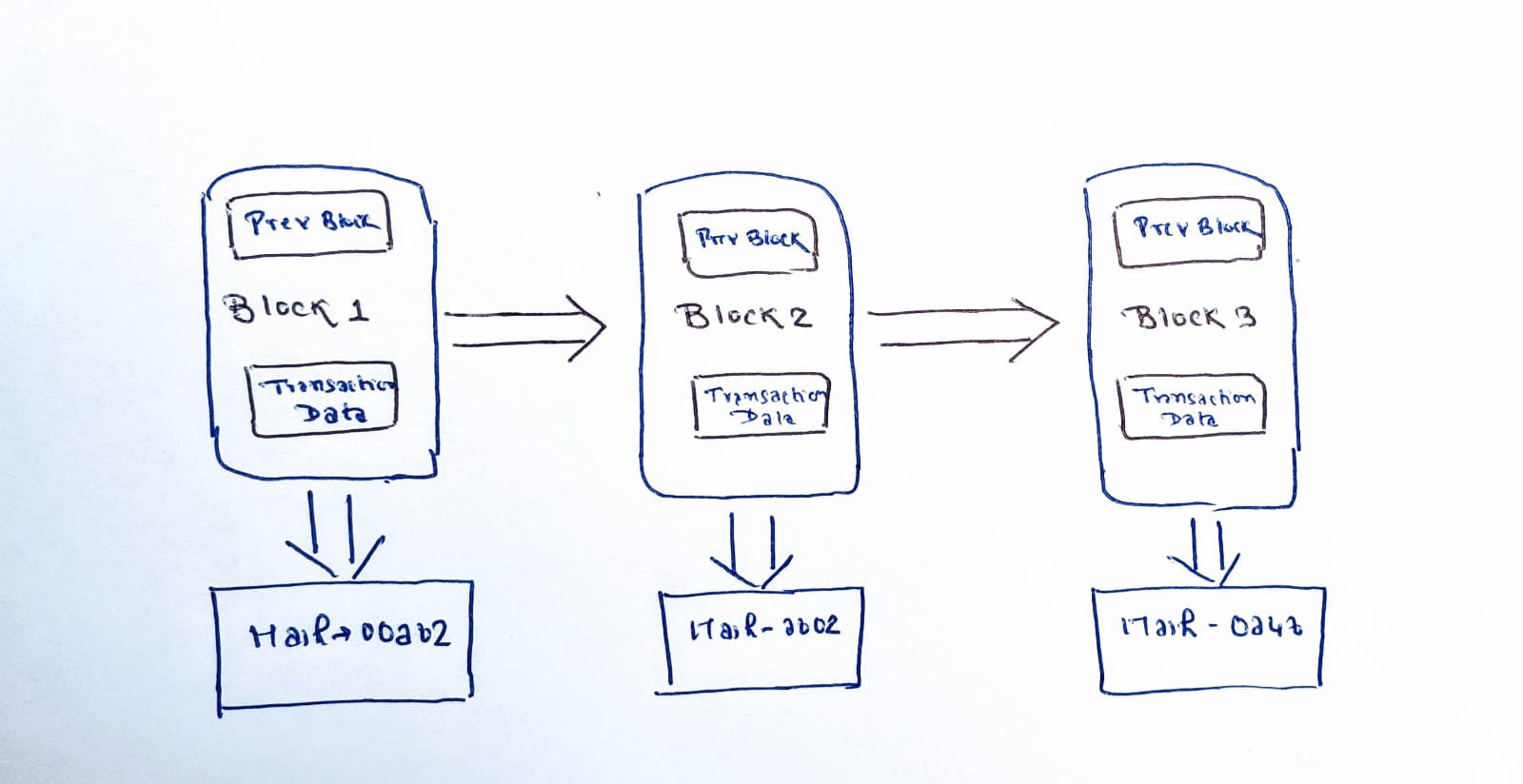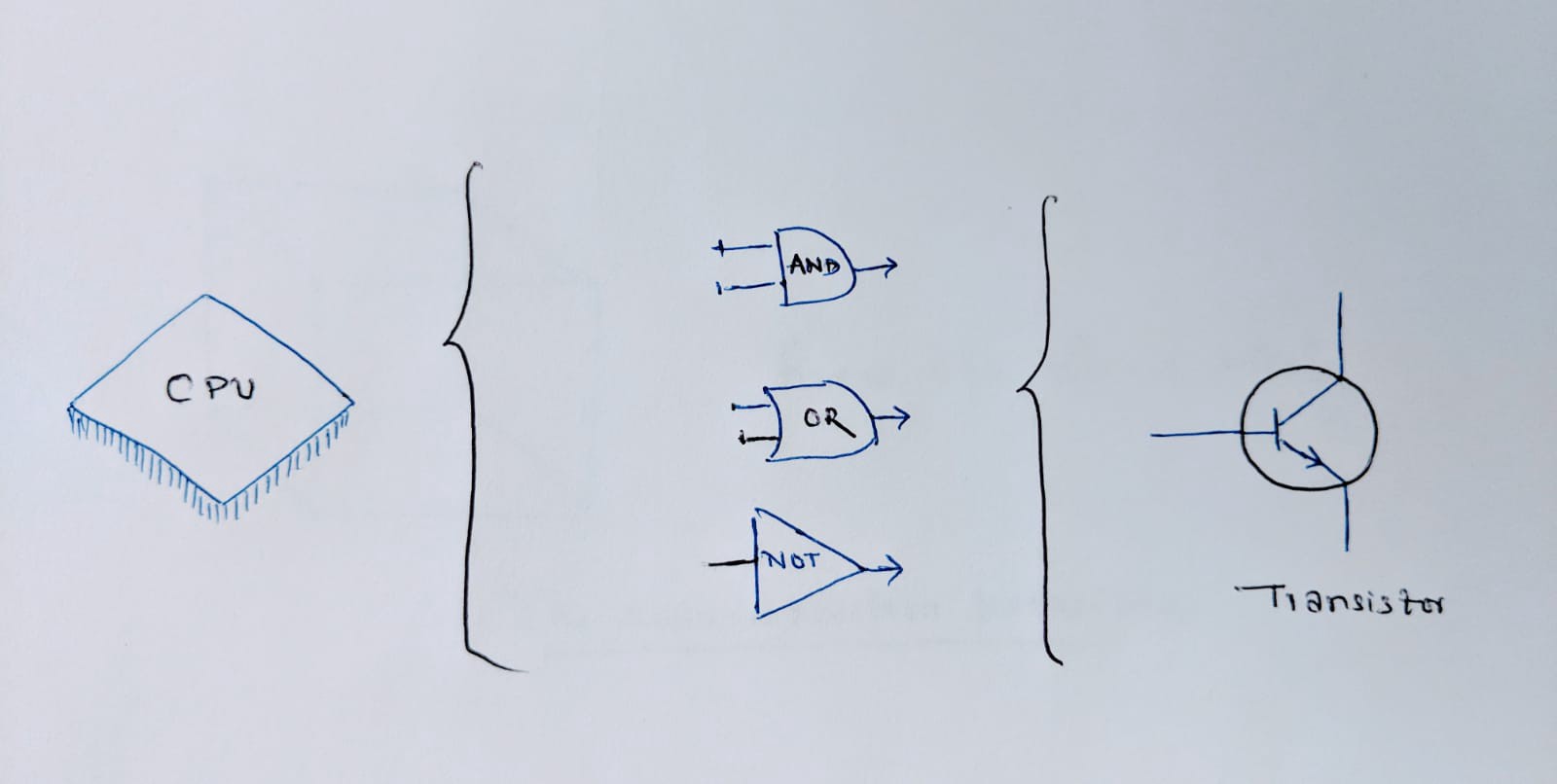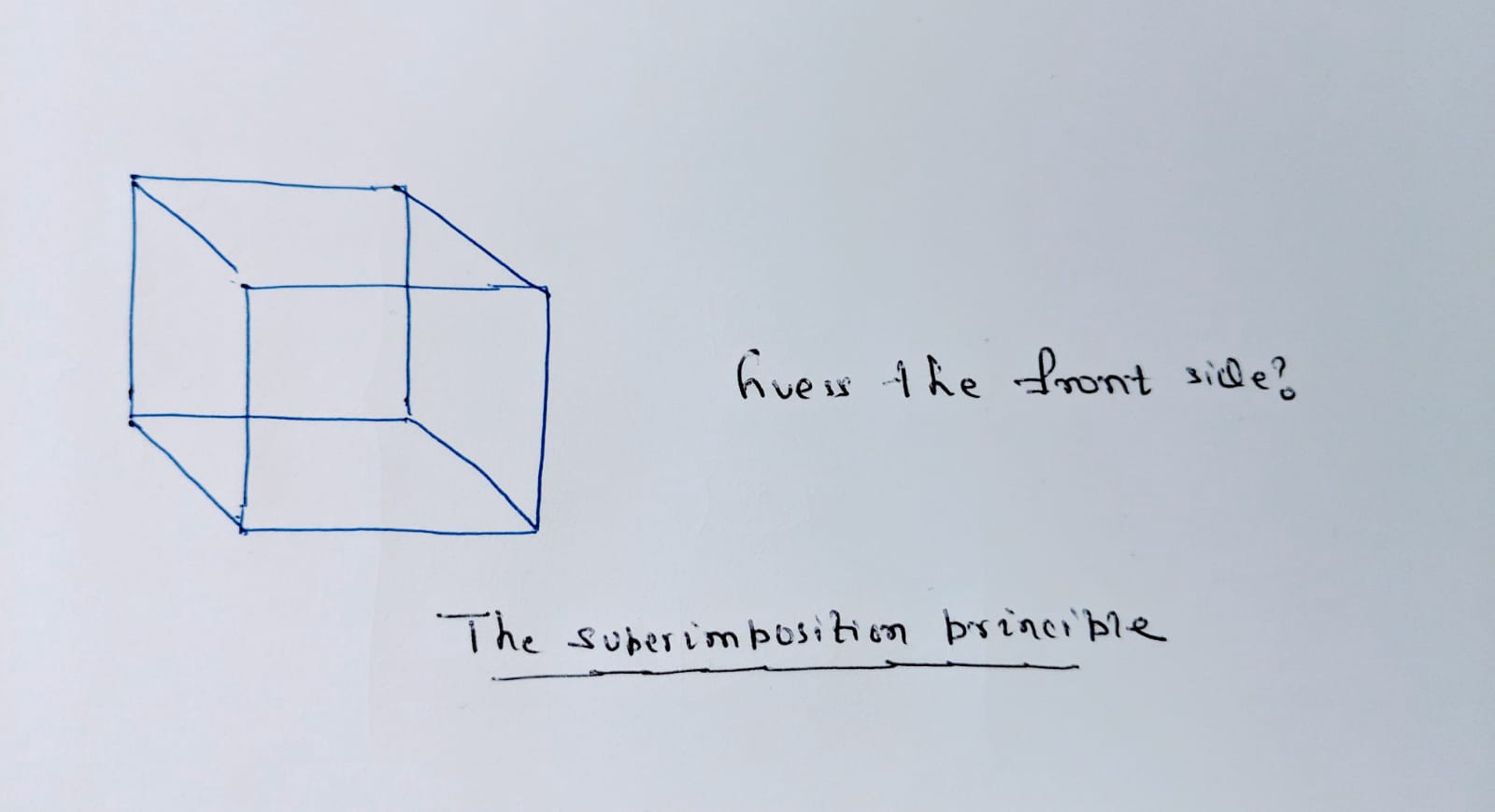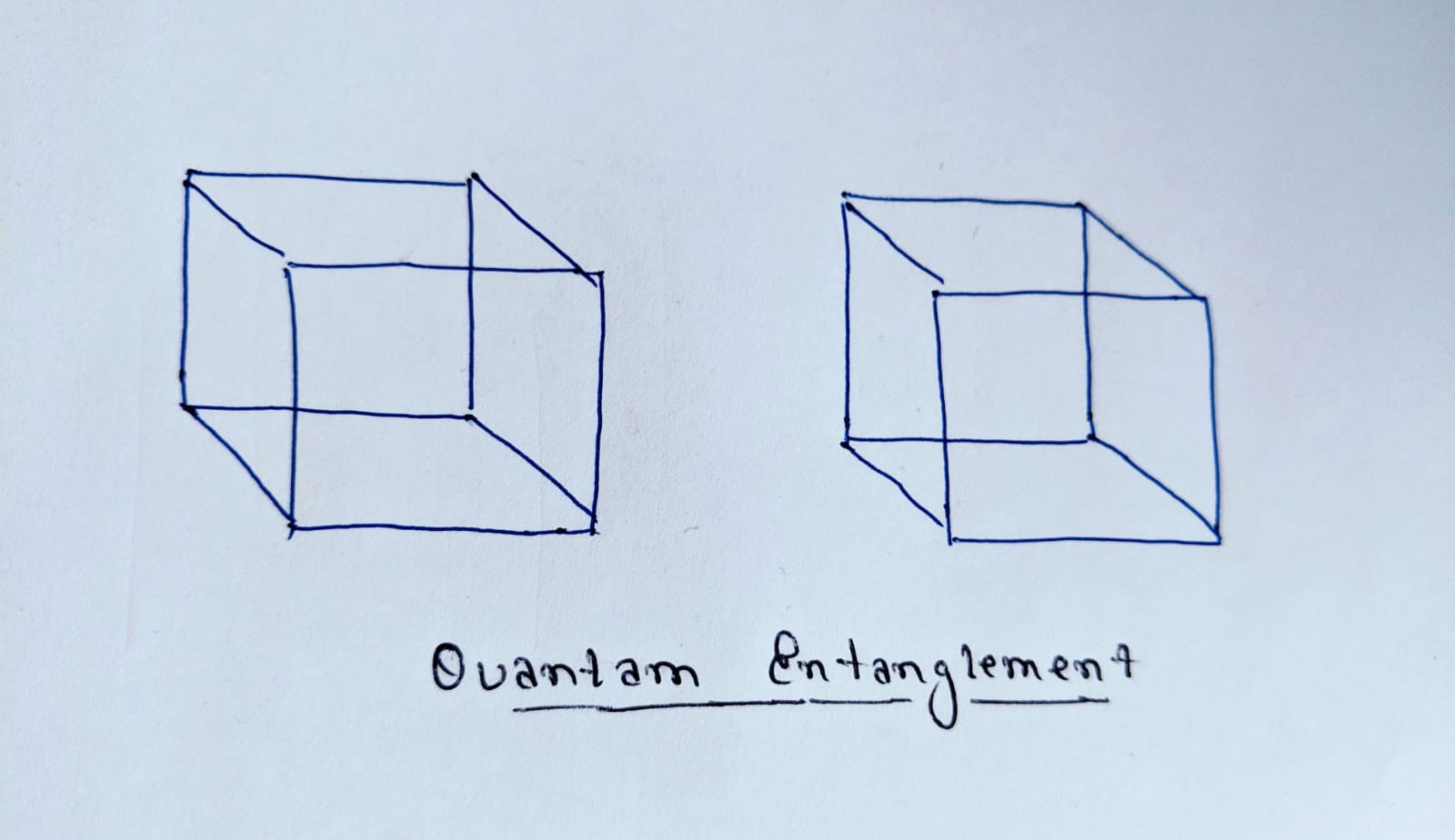Good Saturday, Habr!
Today's translation fits most directly into our searches related to literature on
quantum computing , and can be considered the basic material about the dangers or, conversely, the possibilities that a quantum computer brings to blockchain technology. Will they fall under the onslaught of new quantum possibilities or, conversely, will become even more invulnerable?
In the meantime, watch out for the ad - Vladimir Silva’s
book is on the way — and remember to vote.
Let's see what blockchain is.
Disclaimer: I tried to make this article as simple as possible, and for this I had to ignore the technical nuances a bit. Also, sorry that all drawings are hand-signed. I decided that the pictures that I myself would illustrate the necessary concepts better than what I find on the Internet.
Extremely simple blockchain can be described as follows: this is a registry into which transactions of a certain type are recorded. Blockchain uses mathematical functions, for example, factoring an integer; such functions are easily solved in one direction, but difficult in the opposite - that is how security is ensured.
Blockchain transactions are added to a database called a block, and the block is encrypted with a mathematical tool called a “hash function”. Then the hash is included in the next block with the next set of transactions, which in the next step is again encrypted by the hashing function and gives the next hash. A new hash is added to the next block. In this way, a chain of blocks is formed, and they all seem to be sequentially nested into each other - hence the name “blockchain”.
Here is an example hash generated by the MD5 algorithm in Python. MD5 is a widely used hash function giving a 128-bit hash.
>>> import hashlib >>> def hash(mystring): ... hash_object=hashlib.md5(mystring.encode()) ... print(hash_object.hexdigest()) ... >>> >>> hash("Kellogg first block") 10a4826ea290595ef96e945b31054254
Restoring the original value (“the first Kellogg block” in this case) for a classic computer is extremely difficult. This can only be done with brute force - systematically looking for a solution by sorting out all the possible options and checking whether each next candidate satisfies the problem statement. Similarly, a hash solution for a bitcoin block - starting with many zeros - requires an extremely large amount of computation. That is why, even when using the aggregate computing power of all computers in the bitcoin network, it takes about 7 minutes to solve the block.
However, things can change with the advent of a quantum computer, which potentially poses a threat to blockchain and cryptocurrencies. How? I'll tell you now.
What is a quantum computer?
One of the foundations of most breakthroughs in computing power is the process of continuously reducing the size of transistors. The essence of any form factor of calculations is in a transistor, since transistors form logical gates that process information in a computer.

Over the past decades, chip manufacturers, in particular Intel, have been constantly increasing the number of transistors in the CPU, reducing their size. In a modern CPU, each transistor is even smaller than the HIV virus. In fact, we are close to the limit where transistors are compared in size to atoms. That is why it is widely believed that in the future, Moore’s law will cease to exist, and computing power will cease to grow at the pace we are used to.
One solution to this problem is quantum computing.
In a classical computer, where information is processed based on transistors, a bit can be equal to only 0 and 1. However, quantum calculations are based on a sequence of qubits, each of which can represent one, zero, or any quantum superposition of states of two qubits. In general, a quantum computer with n qubits can be in any superposition with up to 2 ^ n states simultaneously.
A classic computer at any given time can only be in one of 2 ^ n states. Thus, a quantum computer is exponentially faster than a classical one.
How is such a superposition possible? The fact is that the quantum world is, by definition, parallel. In the famous experiment with two slits, set by Thomas Young, a particle could simultaneously penetrate through two slits. The best quantum computer could do a huge amount of computation, and much faster than a classic computer.
Principles of Quantum Computing
Most of us got acquainted with classical mechanics at school, and the phenomenon of quantum computing, on the contrary, cannot be called intuitive. I will try to demonstrate one of the simplest examples that I know from a university course.

Guess which of the faces of the cube is the front? Perhaps you are not sure. However, as soon as you decide for yourself, the confusion will end. The uncertainty of possible states describes one of the most profound principles of quantum mechanics - the principle of superposition.
Thanks to this principle, n qubits can represent any superposition, which includes up to 2 ^ n different states at the same time.
Now consider this picture. Which face is the front?

It is interesting. Here, again, you may not be sure about the answer, but when you decide on the first cube, you will immediately decide on the second. Somehow, these two cubes separated in space are connected.
Quantum entanglement is a phenomenon in which the quantum states of two or more objects must be described relative to each other, even if individual objects are removed from each other in space.
Quantum entanglement is the supercritical detail of working with a quantum computer. A quantum computer sets entanglement, and then measures the output, collapsing the superposition to 0 or 1 (classic state). Many algorithms in the quantum world give the right answer with a certain probability. However, by repeatedly initiating, running, and measuring the results of a quantum computer, one can increase the likelihood of getting the right answer.
Blockchain threat
As mentioned above, blockchain technology is based on the use of cryptographic techniques, which are believed to be almost invulnerable to hacking, except with brute force using huge computing power. Conceptually, such cryptography is similar to the technology by which communication on the Internet is provided.
However, a quantum computer, by virtue of the enormous computing power it has, should theoretically crack public-key cryptography - and therefore pose a threat to the blockchain.
True, there are problems associated with the scaling of quantum computing.
The qubits are extremely fragile. Even background noise can lead to decoherence and disrupt the quantum nature of the particle.
For each useful qubit, another 10 to 100 qubits are needed to correct errors. Research in this area is ongoing, one of the proposed solutions is a
topological quantum computer .
What is the future of blockchain in the world of quantum computing?
When asked by Mark Anderson, co-founder Andreessen Horowitz about the blockchain issue, he said:
When you tell venture capital that there is a huge problem - it only gets into a fuss. So, you need to find a wise guy who would solve this problem.
However, despite his optimism, this is a complex problem.
One potential solution is a quantum blockchain based on quantum cryptography. It was proposed by Del Rajan and Matt Visser from the University of Victoria in Wellington, New Zealand. The idea is simple: if computers began to count too quickly, then you need to complicate the task. Create a blockchain based on quantum particles entangled in time. Thus, just one quantum particle is enough to encode the history of all its predecessors, and it will be impossible to decrypt this chain without destroying it.
However, here you will have to face new problems in the field of blockchain scaling, which is already limited.
The future of the blockchain seems uncertain, but certainly very interesting.